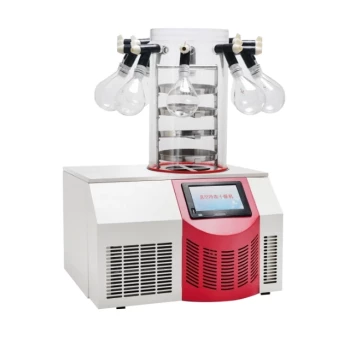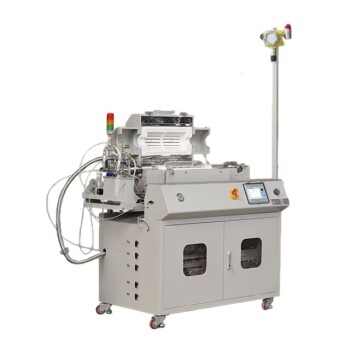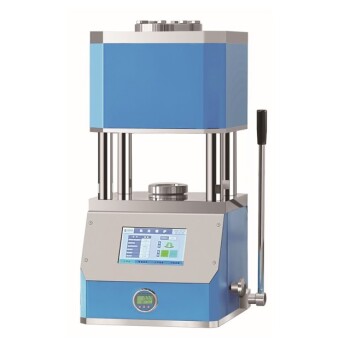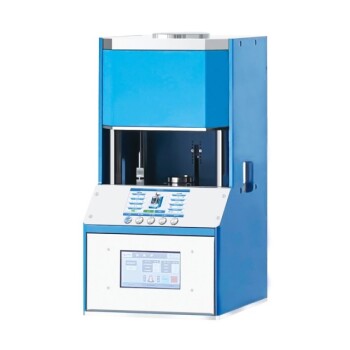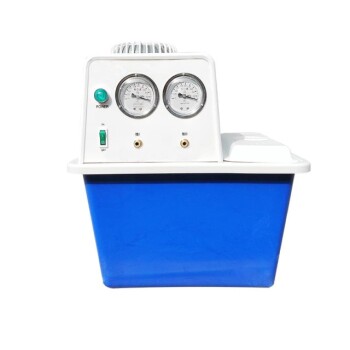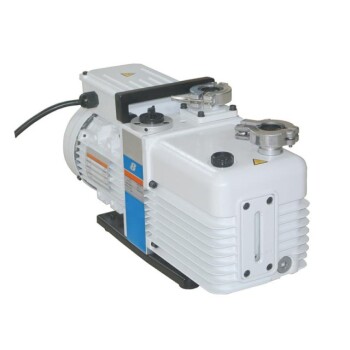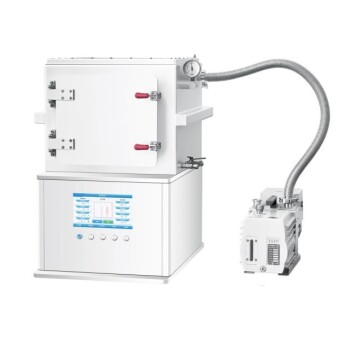A freeze dryer, or Laboratory Freeze Dryer, is a specialized device that removes moisture from perishable materials (like food, pharmaceuticals, or biological samples) through a process called lyophilization. It works by freezing the material, then creating a vacuum to sublimate ice directly into vapor, preserving the product's structure and extending shelf life. This method is critical for heat-sensitive materials where traditional drying would cause damage.
Key Points Explained:
-
Definition and Purpose of a Freeze Dryer
- A freeze dryer (lyophilizer) is designed to dehydrate materials while maintaining their original structure, chemical composition, and biological activity.
- Key applications include:
- Preserving vaccines, antibiotics, and proteins in pharmaceuticals.
- Stabilizing food (e.g., instant coffee, astronaut meals) without losing nutrients or flavor.
- Protecting delicate biological specimens (e.g., tissues, enzymes) for research.
-
Core Working Principle: Sublimation
- Freeze drying relies on sublimation—the direct transition of ice to vapor without passing through a liquid phase.
- Steps:
- Freezing: The material is rapidly frozen (typically at -40°C to -80°C) to form ice crystals.
- Primary Drying: Under vacuum, heat is applied to sublimate ice. The vacuum lowers the pressure, enabling sublimation at low temperatures.
- Secondary Drying: Residual moisture is removed by slightly raising the temperature (20°C–40°C), ensuring complete dehydration.
-
Key Components of a Freeze Dryer
- Vacuum Chamber: Maintains low pressure for sublimation.
- Condenser: Traps water vapor by cooling it back into ice (typically at -50°C or lower).
- Refrigeration System: Cools the condenser and freezes the sample.
- Heating Shelves: Provide controlled warmth during drying phases.
-
Advantages Over Conventional Drying
- Preservation: Avoids thermal degradation, retaining texture, flavor, and potency.
- Rehydration: Freeze-dried products regain original properties when water is added.
- Long Shelf Life: Moisture removal inhibits microbial growth and chemical reactions.
-
Considerations for Purchasers
- Capacity: Choose based on sample volume (bench-top for labs, industrial for large batches).
- Temperature Range: Critical for sensitive materials (e.g., vaccines require ultra-low temperatures).
- Automation: Advanced models offer programmable cycles for reproducibility.
- Maintenance: Condenser defrosting and vacuum pump upkeep are essential for longevity.
Freeze dryers exemplify how precise engineering meets practical needs—transforming perishable items into stable, lightweight products that power industries from healthcare to space exploration.
Summary Table:
| Key Aspect | Details |
|---|---|
| Process | Freezes material, then sublimates ice under vacuum to remove moisture. |
| Applications | Pharmaceuticals, food preservation, biological research. |
| Advantages | Retains structure, flavor, and potency; long shelf life; easy rehydration. |
| Key Components | Vacuum chamber, condenser, refrigeration system, heating shelves. |
| Purchase Factors | Capacity, temperature range, automation, maintenance needs. |
Upgrade your lab’s preservation capabilities with a freeze dryer from KINTEK! Our precision-engineered lyophilizers ensure optimal sample integrity for pharmaceuticals, food, and research. Contact us today to find the perfect solution for your needs.



